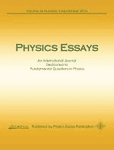
PHYSICS ESSAYS
Scope & Guideline
Challenging Paradigms, Inspiring Innovation
Introduction
Aims and Scopes
- Theoretical Physics and Interpretation:
The journal emphasizes new theoretical frameworks and interpretations of established physical theories, particularly in areas such as quantum mechanics, relativity, and electromagnetism. This includes reevaluating classical theories and proposing alternative explanations for phenomena. - Quantum Mechanics and Quantum Gravity:
A significant focus on quantum mechanics, including studies on quantum entanglement, wave-particle duality, and attempts to unify quantum mechanics with gravity, indicating a deep interest in foundational issues and the quest for a comprehensive theory. - Critique of Established Theories:
The journal often publishes critical analyses of well-established theories, such as Einstein's relativity and quantum mechanics, suggesting potential errors and offering new insights that challenge the status quo. - Interdisciplinary Approaches:
Research published in the journal frequently integrates concepts from various fields, including thermodynamics, kinetic theory, and even consciousness, indicating a broad and holistic view of physics. - Experimental and Theoretical Validation:
The journal also values the relationship between theory and experiment, as seen in titles discussing experimental proofs and theoretical models that align with empirical observations.
Trending and Emerging
- Quantum Information and Entanglement:
Recent publications have highlighted quantum entanglement and its implications, marking a trend towards exploring the foundational aspects of quantum information theory and its potential applications. - Reassessment of Relativity:
There is a noticeable increase in critical examinations of Einstein's theories, particularly special and general relativity, suggesting a growing interest in alternative models and interpretations that challenge established views. - Theoretical Models of Gravity:
Emerging theories regarding gravity, particularly those that seek to unify it with quantum mechanics, are gaining attention, indicating a significant trend towards developing new gravitational models that address current gaps in understanding. - Philosophical Implications of Physics:
The intersection of physics and philosophy is becoming increasingly relevant, with discussions around the nature of time, consciousness, and the fundamental structure of reality gaining traction in recent publications. - Exploration of Dark Matter and Energy:
Papers addressing dark matter and dark energy theories have seen an upsurge, reflecting ongoing efforts to understand these enigmatic components of the universe and their implications for cosmology.
Declining or Waning
- Classical Mechanics:
Despite its historical significance, papers strictly focused on classical mechanics have become less frequent, possibly overshadowed by more contemporary discussions in quantum mechanics and relativity. - Traditional Electromagnetism:
Research centered solely on classical electromagnetism appears to be decreasing, as newer interpretations and theories that incorporate quantum aspects or alternative frameworks gain traction. - Basic Experimental Physics:
While experimental validation remains important, the journal has seen a decline in papers that merely replicate classical experiments without novel interpretations or implications, suggesting a shift towards more theoretical explorations. - Causality in Classical Contexts:
The exploration of causality within classical physics contexts is less prominent, as discussions increasingly focus on quantum interpretations and their implications for causality.
Similar Journals

BRAZILIAN JOURNAL OF PHYSICS
Advancing Knowledge in Physics and AstronomyBRAZILIAN JOURNAL OF PHYSICS, published by SPRINGER, is a prominent platform dedicated to the dissemination of research within the realm of physics and astronomy. With an ISSN of 0103-9733 and E-ISSN of 1678-4448, this esteemed journal has been contributing to the field since its inception in 1996, and it continues to be pivotal in showcasing innovative studies and breakthroughs. The journal is categorized in the Q4 quartile for the year 2023, reflecting a dedicated focus on advancing knowledge across a variety of disciplines, particularly in general physics and astronomy, where it ranks 126th out of 243 in Scopus rankings. Although it currently does not operate under an open-access model, it remains an invaluable resource for researchers, professionals, and students eager to enhance their understanding of complex physical principles and developments. The journal is committed to promoting high-quality research, bridging gaps in knowledge, and fostering collaboration within the global physics community.

Journal of Physical Studies
Advancing the Frontiers of Physics and AstronomyJournal of Physical Studies, published by the WEST UKRAINIAN PHYSICAL SOC, is a prominent academic journal dedicated to disseminating research in the field of physics and astronomy. Established in 2004 and continuing through to 2024, the journal aims to provide a platform for original research, reviews, and innovative theoretical developments that contribute to the understanding and advancement of physical sciences. With an ISSN of 1027-4642 and E-ISSN of 2310-0052, this journal is recognized for its commitment to fostering scholarly communication within the scientific community. Although currently listed in Q3 of the Physics and Astronomy category, it has the potential for upward trajectory, as evidenced by its ranking of #192 among 243 journals in the general physics category (2023 Scopus Ranks). Situated in Lviv, Ukraine, this journal plays a vital role in enriching the academic landscape, particularly among researchers, professionals, and students seeking access to critical insights and developments in physics. Readers can explore research articles, fostering a collaborative and expansive view of current trends and advancements in the field.
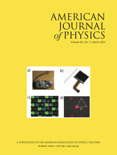
AMERICAN JOURNAL OF PHYSICS
Exploring the Frontiers of Physics and Astronomy.The American Journal of Physics (ISSN: 0002-9505, E-ISSN: 1943-2909), published by AIP Publishing, has been a cornerstone in the realm of physics education and research since its inception. With a broad scope that covers a plethora of topics in physics and astronomy, this journal serves as a vital resource for researchers, educators, and students alike, aiming to foster a deeper understanding of the fundamental principles of physics. As of 2023, it holds a commendable Q2 ranking in Physics and Astronomy (miscellaneous), reflecting its impactful contributions and rigorous peer-review process. Although the journal does not offer open access, it continues to be widely circulated, ensuring that groundbreaking research is accessible to a dedicated audience. The convergence of historical insights and contemporary advancements makes the American Journal of Physics an essential publication for those striving to stay at the forefront of the field.
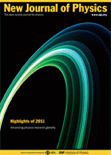
NEW JOURNAL OF PHYSICS
Unveiling the universe, one discovery at a time.NEW JOURNAL OF PHYSICS, published by IOP Publishing Ltd, is a prestigious open-access journal that has been at the forefront of the physics community since its inception in 1998. With an impact factor that places it in the Q1 category of Physics and Astronomy (miscellaneous) and a commendable ranking of #49 out of 243 in the general physics and astronomy category according to Scopus, this journal is recognized for its significant contribution to advancing research in the field. The journal caters to a broad scope of topics, providing a platform for the dissemination of cutting-edge research findings and innovative theoretical explorations. Operating from the United Kingdom, it offers a truly international perspective, making its contents accessible and impactful to a global audience. With robust open-access options, the NEW JOURNAL OF PHYSICS ensures that research findings are freely available, promoting collaboration and knowledge sharing among researchers, professionals, and students alike. This commitment to accessibility, combined with its high-quality content, makes it an essential resource for anyone engaged in the physics community.
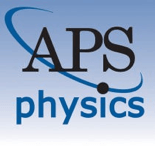
REVIEWS OF MODERN PHYSICS
Exploring Breakthroughs in Contemporary PhysicsREVIEWS OF MODERN PHYSICS, published by the American Physical Society, stands as a premier journal in the field of physics and astronomy, evidenced by its esteemed Q1 ranking in the 2023 category. With a notable ISSN of 0034-6861 and E-ISSN of 1539-0756, this journal has been a cornerstone for scholarly excellence since its inception in 1929. Operating from the heart of the United States at One Physics Eklipse, College Park, MD 20740-3844, REVIEWS OF MODERN PHYSICS enjoys a significant reputation, holding a top rank of #1 out of 243 in the Scopus rankings for General Physics and Astronomy, and securing its place in the 99th percentile. While it does not provide open access, the journal remains a critical resource for researchers and students alike, offering comprehensive reviews and breakthroughs that drive innovation and understanding in modern physics. As it converges towards its centennial year in 2024, the journal continues to foster significant academic discourse, making it an invaluable platform for the dissemination of pioneering ideas and research outcomes.
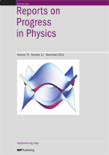
REPORTS ON PROGRESS IN PHYSICS
Unveiling breakthroughs in the world of physical sciences.Reports on Progress in Physics is a prestigious scholarly journal published by IOP Publishing Ltd, based in the United Kingdom. With an illustrious history dating back to 1934, this journal serves as a vital resource for researchers and professionals in the fields of physics and astronomy, offering comprehensive overviews of significant developments in these disciplines. It holds a commendable Q1 classification in both Medicine (miscellaneous) and Physics and Astronomy (miscellaneous) categories, further underscored by its impressive ranking as 4th out of 243 in the general physics and astronomy sector, placing it in the top 2% percentile on Scopus. The journal is dedicated to disseminating high-quality, peer-reviewed articles that facilitate the understanding of complex physical phenomena and their applications. Although it does not currently offer open access options, its rigorous editorial standards ensure that only the most impactful research reaches its wide audience of academics, practitioners, and students, solidifying its role as a cornerstone of knowledge in the physical sciences.

JOURNAL OF THE KOREAN PHYSICAL SOCIETY
Bridging Ideas and Innovations in Physical ResearchJOURNAL OF THE KOREAN PHYSICAL SOCIETY is a prominent academic journal dedicated to advancing the field of physics, published by the prestigious Korean Physical Society. With its extensive contribution to the scientific community since its inception in 1996, this journal serves as an essential platform for the dissemination of innovative research findings in various branches of physical science. Despite its current categorization in Q4 and a ranking reflecting its early-stage impact relative to peers, it remains a valuable resource for researchers, professionals, and students eager to explore developments in general physics and astronomy. The journal is accessible in both print and electronic formats, making it convenient for a global audience. Each issue aims to foster collaboration and knowledge-sharing within the field, ensuring that it remains relevant and instrumental in shaping future research directions. Located in South Korea, the journal continues to nurture a vibrant academic community, contributing to the ongoing dialogue in the global scientific arena.
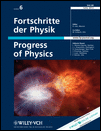
FORTSCHRITTE DER PHYSIK-PROGRESS OF PHYSICS
Advancing the Frontiers of Physics ResearchFORTSCHRITTE DER PHYSIK-PROGRESS OF PHYSICS, published by WILEY-V C H VERLAG GMBH, is a prestigious academic journal esteemed within the field of physics. With a history spanning over seven decades since its inception in 1953 and a converged publication up until 2024, this journal has established itself as a leading source for groundbreaking research and developments across diverse domains in physics and astronomy. Holding an influential Q1 ranking in the 2023 category of Physics and Astronomy (miscellaneous), it serves as an essential platform for disseminating high-quality research findings and theoretical advancements. Although not an Open Access publication, FORTSCHRITTE DER PHYSIK provides access to critical insights and scholarly discussions that are pivotal for researchers, professionals, and students alike. The journal is committed to contributing to the evolution of knowledge in physics, supporting the academic community through rigorous peer-reviewed articles, reviews, and innovative studies.

Jurnal Fizik Malaysia
Empowering Researchers to Illuminate the World of Physics.Jurnal Fizik Malaysia is a prominent academic journal dedicated to advancing the field of physics, published by the esteemed Institut Fizik Malaysia. With an aim to foster knowledge dissemination and research collaboration among physicists, the journal serves as a vital platform for original research articles, reviews, and technical notes that cover various sub-disciplines of physics. Although the journal operates under a traditional subscription model, its commitment to quality has been bolstered by a rigorous peer-review process, ensuring high academic standards. Researchers and students in Malaysia and beyond are encouraged to engage with this journal, contributing to a deeper understanding of physical sciences and its applications. Moreover, with its ISSN 0128-0333, Jurnal Fizik Malaysia continues to play a significant role in the scientific community, enhancing visibility and accessibility for local and international research outputs in the ever-evolving landscape of physics.

JETP LETTERS
Pioneering Research, Inspiring InnovationJETP LETTERS, published by MAIK NAUKA/INTERPERIODICA/SPRINGER, is a prestigious journal in the field of physics and astronomy, which plays a pivotal role in disseminating groundbreaking research and innovative ideas since its inception in 1969. With an ISSN of 0021-3640 and an E-ISSN of 1090-6487, this journal aligns well with the interests of both seasoned researchers and emerging scholars, having achieved a 2023 category rank of Q3 for miscellaneous topics within physics and astronomy. Located in the United States at 233 SPRING ST, NEW YORK, NY 10013-1578, JETP LETTERS serves as a critical resource for its readership, offering exclusive insights and advancements across diverse areas of physics. While not open access, it hosts a collection of articles that refine theoretical approaches and experimental methods, providing both knowledge and inspiration to professionals and academics seeking to make impactful contributions to the scientific community. The journal’s quality is reflected in its Scopus ranking, where it stands at 39 out of 81 in the multidisciplinary category, placing it in the 52nd percentile, thus underscoring its significance and reliability as a scholarly outlet.